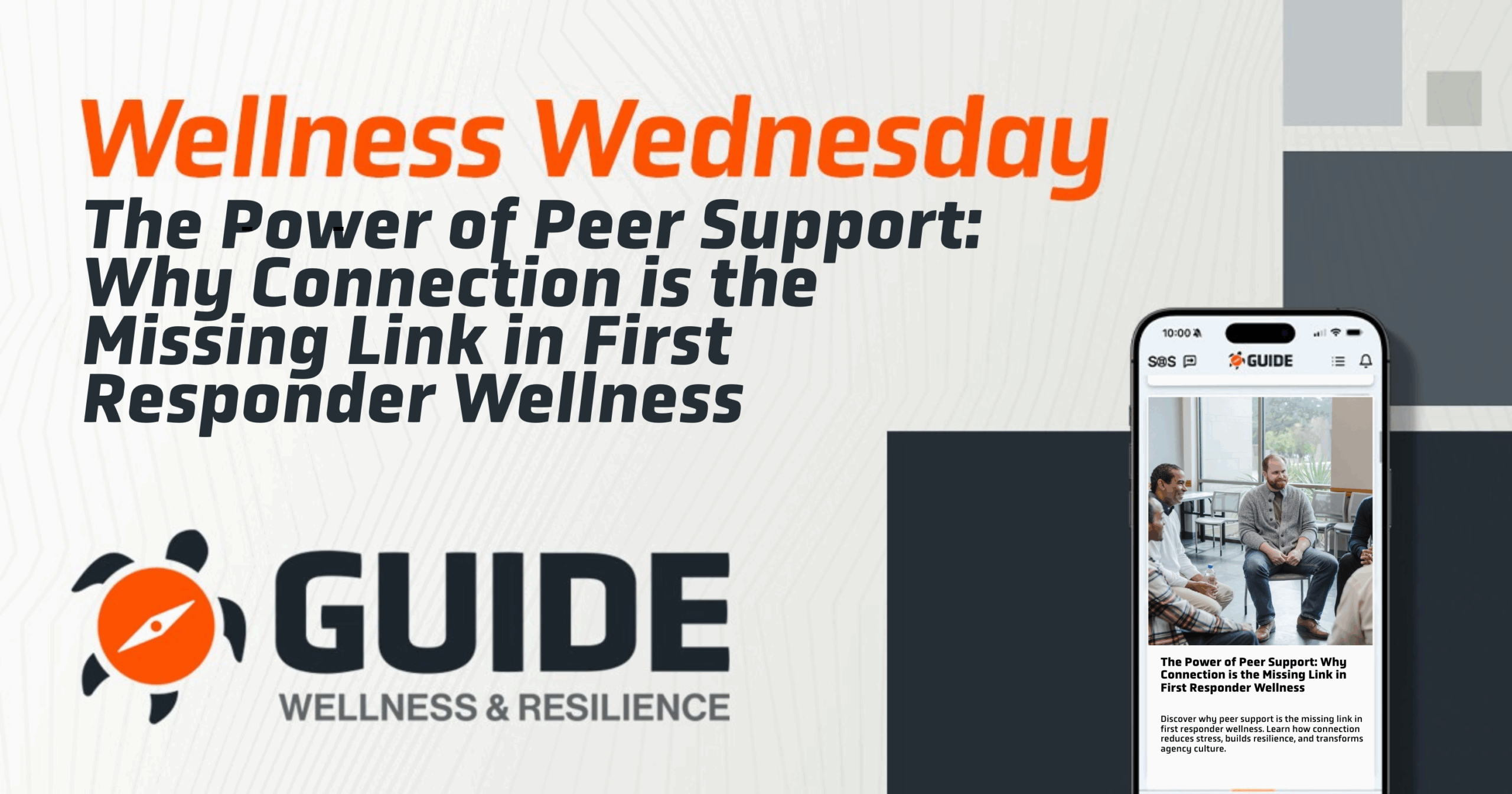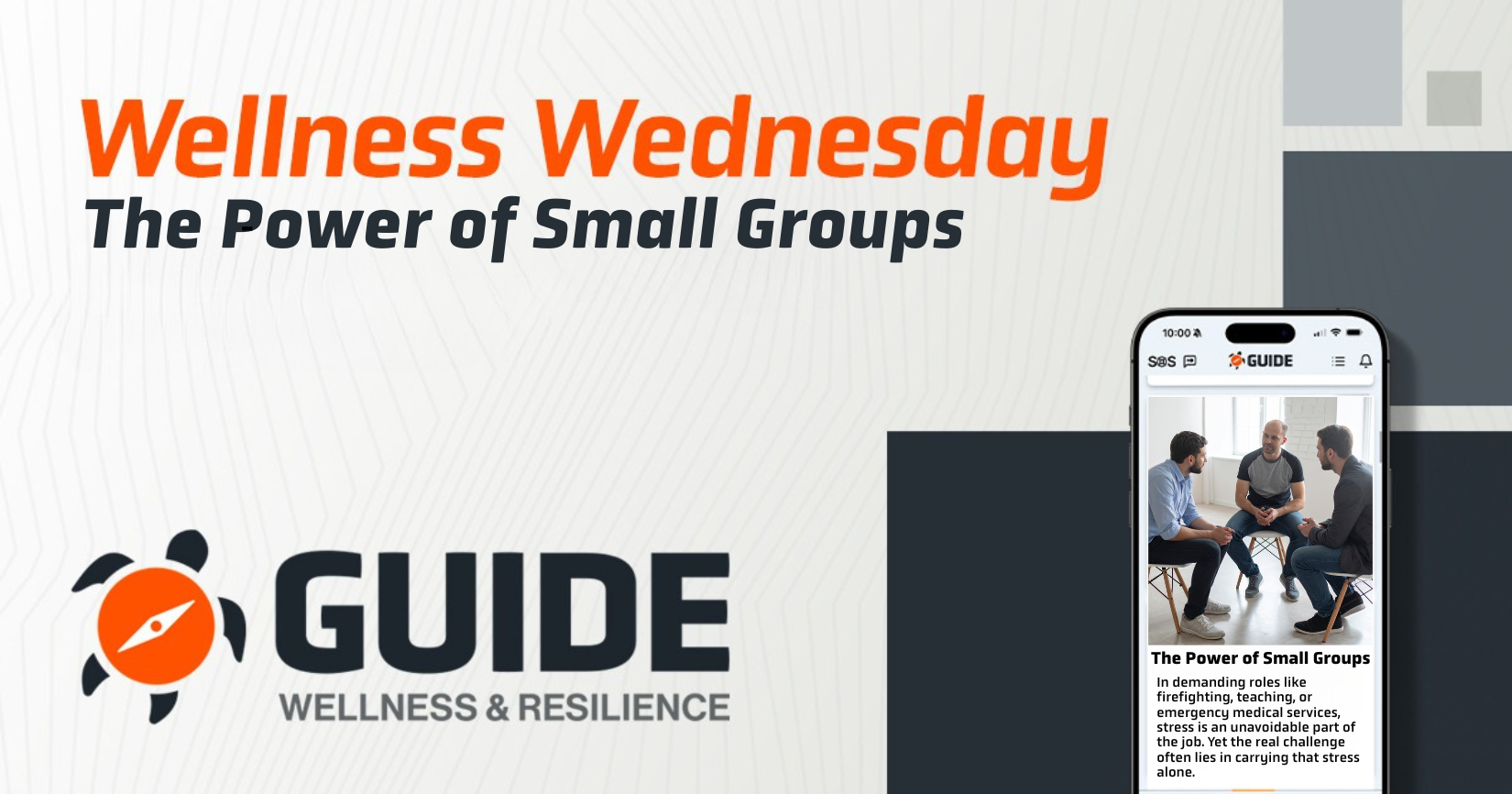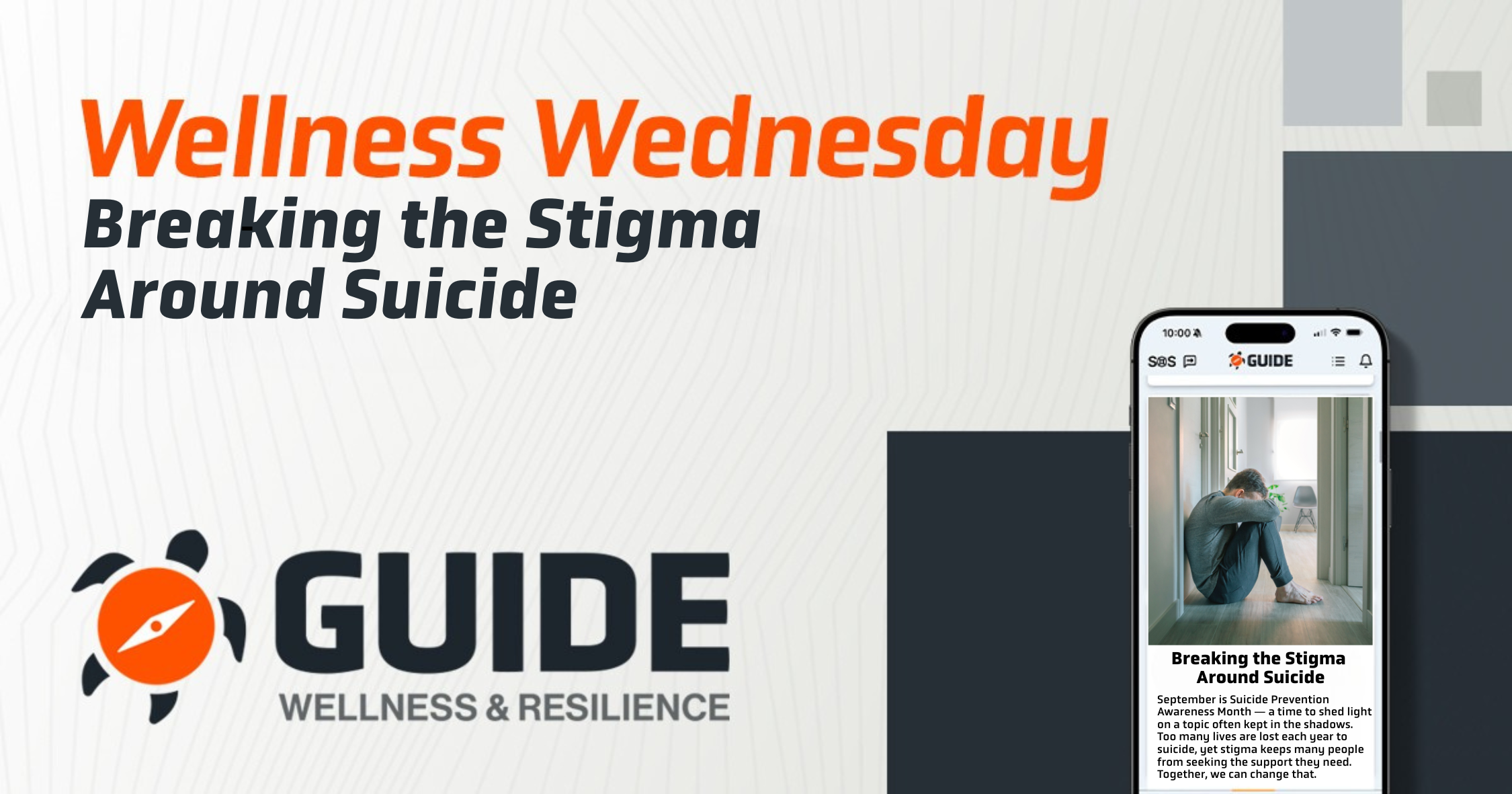Beyond Self-Reliance
For decades, first responder culture has prized toughness and self-reliance. Firefighters, EMS professionals, police officers, and other frontline workers are expected to push through exhaustion, stress, and trauma with little visible impact. But in recent years, research and experience have shown what many first responders already knew: carrying the weight of the job alone takes a serious toll.
The good news? The antidote is often found in one of the strongest aspects of the profession itself, connection. Peer support, when structured effectively, has the power to reduce stress, improve mental health, and help first responders thrive in some of the toughest jobs imaginable.
This article explores the science, culture, and practical application of peer support — and why it may be the most overlooked (yet most effective) wellness tool available today.
The Hidden Cost of Silence
First responders experience stress and trauma at rates far higher than the general population. According to the Substance Abuse and Mental Health Services Administration (SAMHSA), approximately 30% of first responders develop behavioral health conditions, including depression and PTSD, compared with 20% in the general population.
Yet, stigma often keeps individuals from seeking formal help. Many worry that admitting to struggles will be seen as weakness or jeopardize their careers. Silence becomes the norm, but it comes at a cost:
- Increased burnout: Constant stress without release accelerates fatigue and emotional exhaustion.
- Isolation: Without open conversation, responders often feel like no one else understands their experiences.
- Risk escalation: Suppressed stress can lead to substance misuse, relationship breakdowns, and worse mental health outcomes.
Peer support disrupts this silence. It creates a safe, culturally competent environment where responders can be open with people who truly “get it.”
What Is Peer Support?
Peer support is the process of connecting individuals who share common experiences to provide mutual understanding, encouragement, and accountability. In first responder settings, it typically involves trained peers, firefighters supporting firefighters, police supporting police, EMS supporting EMS.
Key features of effective peer support:
- Shared experience: Credibility comes from walking the same path.
- Confidentiality: Trust is non-negotiable. Conversations remain private.
- Accessibility: Unlike formal counseling, peer support is often immediate and informal.
- Bridge to care: Peer supporters can encourage professional help when needed.
Why Peer Support Works (The Science)
Peer support is not just “nice to have.” It’s proven to work. Research across mental health, addiction recovery, and resilience training shows clear benefits:
- Reduced isolation: Human beings are wired for connection. Peer networks restore belonging.
- Improved coping: Sharing strategies and stories provides practical, real-world solutions.
- Lower stigma: Talking with a peer feels less threatening than formal counseling.
- Greater resilience: Repeated positive connections buffer the physiological impacts of stress.
- Better engagement: Peer-led programs see higher participation than top-down wellness initiatives.
In fact, a 2018 RAND study found that peer support programs in first responder communities significantly increased willingness to seek help and reduced the stigma surrounding mental health.
Peer Support in Action: Stories from the Field
- Firefighting Crews: Firehouses that integrate structured peer support report lower turnover and fewer stress-related absences. One department in the Midwest saw a 40% increase in utilization of wellness resources after launching a peer program.
- EMS Units: Paramedics often face cumulative trauma from frequent critical incidents. Peer debriefings after calls have been shown to reduce stress symptoms in the weeks that follow.
- Law Enforcement: Police departments implementing peer support teams report higher morale and greater trust within the force — even among officers skeptical of traditional mental health services.
The common theme? When responders talk to each other, the culture shifts from “suck it up” to “we’ve got your back.”
Barriers to Peer Support (And How to Overcome Them)
Despite its power, peer support isn’t without challenges:
- Stigma: Some still view it as weakness. Solution: Normalize peer conversations by having respected leaders participate.
- Confidentiality concerns: Fear of information “getting out.” Solution: Set clear policies protecting privacy.
- Access issues: Peers aren’t always available in person. Solution: Leverage technology (like The GUIDE App) to provide 24/7 connection.
- Training gaps: Not every peer is equipped to handle tough conversations. Solution: Provide structured training in listening, referral, and boundaries.
The Role of Technology in Peer Support
Traditionally, peer support required physical presence, sitting across from a colleague at the station or after a call. But technology has expanded what’s possible.
Mobile platforms like The GUIDE App allow peer support to extend beyond geography and shift schedules. Firefighters in rural departments can connect with peers statewide. EMS professionals can access confidential forums on their own time. With anonymity built in, even those hesitant to raise their hand in person can participate.
This hybrid approach (traditional + digital) ensures peer support is always available, always private, and always culturally competent.
Building a Culture of Peer Support
Peer support isn’t just a program, it’s a culture. To build it, agencies must:
- Train the trainers: Invest in peer support team development.
- Lead from the top: Leadership endorsement is critical for normalization.
- Make it easy: Simple access increases adoption.
- Celebrate wins: Highlight stories of resilience to reinforce value.
- Integrate tools: Combine peer support with broader wellness resources like resilience training, coaching, and daily practices.
The Ripple Effect: Beyond the Individual
When peer support thrives, the benefits extend beyond individual responders:
- Stronger teams: Trust and cohesion improve performance on the job.
- Safer communities: Healthy responders make better decisions under pressure.
- Family well-being: Reduced stress carries over into personal lives.
- Cultural change: Over time, silence is replaced by openness, resilience, and mutual support.
How GUIDE Supports Peer Connection
While this article is about peer support broadly, it’s worth noting how Delaware’s partnership with The GUIDE App reflects these principles in action. GUIDE was selected in part because it integrates:
- Anonymous peer-to-peer forums
- Science-based resilience content
- Confidential one-on-one coaching
- A mobile platform accessible anytime, anywhere
In short: peer support is not an add-on, it’s built into the DNA of the program.
Conclusion: Stronger Together
First responders face extraordinary challenges. But the burden doesn’t need to be carried alone. Peer support provides connection, accountability, and hope in ways no other intervention can replicate.
As more states invest in structured, tech-enabled peer support solutions, the path forward is clear: resilience is a team sport. And when first responders support each other, everyone wins, first responders, families, agencies, and communities alike.




